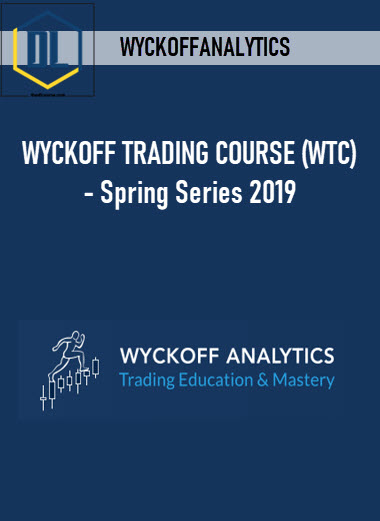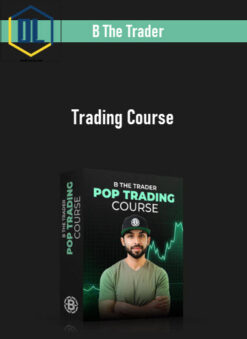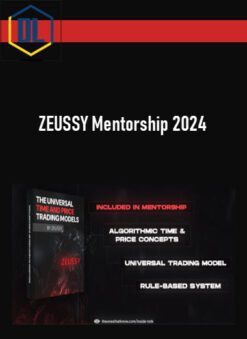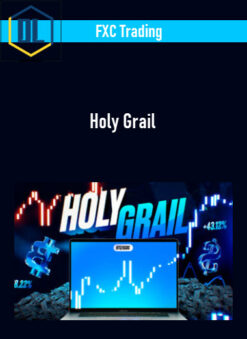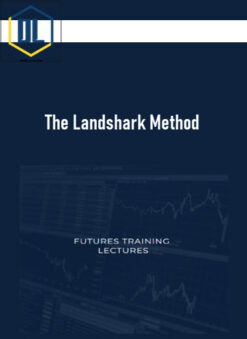WYCKOFFANALYTICS – WYCKOFF TRADING COURSE (WTC) – Spring Series 2019
$199.00 Original price was: $199.00.$9.00Current price is: $9.00.
Product Delivery: Instant Deliver
Description
WYCKOFFANALYTICS – WYCKOFF TRADING COURSE (WTC) – Spring Series 2019

Salepage : WYCKOFFANALYTICS – WYCKOFF TRADING COURSE (WTC) – Spring Series 2019
Get WYCKOFF TRADING COURSE (WTC) – Summer Series 2019 of author WYCKOFFANALYTICS only price 107$
About the Instructor:
Roman Bogomazov is a Wyckoff Method trader and educator. He is an Adjunct Professor at Golden Gate University in San Francisco, where, together with the late Hank Pruden, he developed a Wyckoff Method online curriculum. He is also President of Wyckoff Associates, LLC, an enterprise providing online Wyckoff Method education to traders throughout the world (www.wyckoffanalytics.com).
Using WyckoffAnalytics.com as a thriving trading community platform, Roman has developed a comprehensive educational curriculum covering basic to advanced Wyckoff concepts and techniques, as well as visual pattern recognition and real-time drills to enhance traders’ skills and confidence. In the last 3 years alone, Roman has conducted over 700 classes and presentations, and has taught collaboratively with many Wyckoff experts and traders.
A dedicated and passionate Wyckoffian, he has used the Wyckoff Method exclusively for his own trading for the last 20 years. Roman has also served as a Board Member of the International Federation of Technical Analysts and as past president of the Technical Securities Analysts Association of San Francisco.
WYCKOFF TRADING COURSE – SUMMER SERIES OUTLINE
Section #1 (Summer 2019) – WYCKOFF STRUCTURAL PRICE ANALYSIS
Description: In Section #1 you will learn how to to read market structure by applying Wyckoff’s cardinal insights regarding the interplay of price, volume and time. Understanding market structure allows you to anticipate coming price action. You will learn to identify and analyze accumulation, distribution, re-accumulation and re-distribution – the key trading ranges that power trends. You will also learn Wyckoff Method trade set-ups based on market structure, how to enter a new or an existing trend, and how to recognize in advance when a trend is likely to end.
- The Price Cycle: Accumulation, Mark-Up, Distribution and Mark-Down
- Change of Character in an established trend: identifying a change from a trending to a non-trending environment
- Change of Character in a trading range: identifying price and volume action signaling the initiation or continuation of a trend
- Trading ranges that generate big trends: accumulation and distribution
- A key concept in Wyckoff Method analysis of trading ranges: Phases
- Phase anatomy: Wyckoff Method events (e.g., climaxes, tests, springs, upthrusts, signs of strength)
- Identifying phases in accumulation and distribution
- Characteristics of re-accumulation and re-distribution trading ranges
- Distinguishing re-accumulation from distribution and re-distribution from accumulation
- Three Wyckoff Method rules for trades based on market structure
- Delineating Buying and Selling Zones using the Wyckoff Method, including entry and exit strategies
- Exercises and homework assignments
Section #2 (Summer 2019) – SUPPLY AND DEMAND
Description: Here Mr. Bogomazov will focus in detail on identifying supply and demand on any chart. The Wyckoff Method is based on the assumption that all freely traded markets are governed by supply and demand. In today’s markets, as in Wyckoff’s time, large professional interests dominate supply and demand. Having the ability to accurately read supply and demand on a chart will allow you to make better decisions about timing your entries and exits and to join the large operators rather than being caught on the wrong side of a trade.
- Concepts in supply and demand – the forces that move all markets
- Who is the “Composite Operator” and how do his actions in the market affect supply and demand?
- Volume and spread analysis
- Variations of spread and volume in different market environments
- Effort (volume) versus results (price action) – confirmation and discordance both predict future price behavior
- Volume analysis and schematics in trading ranges
- Volume characteristics in different phases of accumulation and distribution
- Wyckoff’s springboard: when price is poised to move
- Tradeable volume patterns
- Exercises and homework assignments
Section #3 (Summer 2019) – RELATIVE AND COMPARATIVE STRENGTH
Description: Relative and comparative strength, the core of Section #3, are Wyckoff Method concepts that can help you select the top stocks in the best sectors to trade, particularly at market turns. In these sessions, you will learn how to apply these concepts to identify candidates for long or short trades, and how they can also be used to improve the timing of your entries and exits. wyckoffanalytics
- Relative and comparative strength analysis: how to choose the best vehicles to trade
- Use of comparative strength for stock selection in the Wyckoff Method
- Improving the Wyckoff Method’s comparative strength analysis in trading ranges
- Differences between relative and comparative performance
- Using changes in relative strength or weakness to spot sectors and stocks to trade
- Creating selection filters using relative and comparative strength to identify high-probability trades
- Exercises and homework assignments
Section #4 (Summer 2019) – PUTTING IT ALL TOGETHER: DEVELOPING A WYCKOFF TRADING PLAN
Description: The first three sections incorporate foundational elements of the Wyckoff Method and are designed to allow you to immediately apply standalone concepts in each to your own trading. To help students integrate these elements in greater depth, Mr. Bogomazov will teach how to create a Wyckoff trading plan in Section #4.
- Using filters to improve selection of stocks or options to trade
- Relative strength filters
- Structural filters
- Supply and demand filters
- Using multiple filters to pinpoint the best trades and times to open positions
- Market Analysis as a Filter – timing entries in sync with the market
- Using Wyckoff Method concepts to create a trading plan
- Back-testing your trading plan with a pre-formatted Excel template – key variables to track
- Trading tactics for your Wyckoff trading plan: entries, position management, and exits
- Exercises and homework assignments
- Section #4 duration: 2 online sessions
Important Disclaimer: WYCKOFF TRADING COURSE
There is a very high degree of financial risk involved in trading securities, futures and other financial instruments. You understand and acknowledge that you alone are responsible for your trading and investment decisions and results. The materials presented in this course are for educational purposes only: nothing contained therein should be construed as investment advice.
Roman Bogomazov is not a registered investment advisor and does not purport to recommend which securities individuals should buy or sell. Presenter assumes no responsibility or liability of any kind for your trading and investment results. It should not be assumed that investments in or trading of securities, options, futures, ETFs, companies, sectors or any other markets identified and described in this course were, are or will be profitable.
Delivery Policy
When will I receive my course?
You will receive a link to download your course immediately or within 1 to 21 days. It depends on the product you buy, so please read the short description of the product carefully before making a purchase.
How is my course delivered?
We share courses through Google Drive, so once your order is complete, you'll receive an invitation to view the course in your email.
To avoid any delay in delivery, please provide a Google mail and enter your email address correctly in the Checkout Page.
In case you submit a wrong email address, please contact us to resend the course to the correct email.
How do I check status of my order?
Please log in to TheDLCourse account then go to Order Page. You will find all your orders includes number, date, status and total price.
If the status is Processing: Your course is being uploaded. Please be patient and wait for us to complete your order. If your order has multiple courses and one of them has not been updated with the download link, the status of the order is also Processing.
If the status is Completed: Your course is ready for immediate download. Click "VIEW" to view details and download the course.
Where can I find my course?
Once your order is complete, a link to download the course will automatically be sent to your email.
You can also get the download link by logging into your TheDLCourse account then going to Downloads Page.
 IBD Level II – Intermediate Strategies for Successful Investing
IBD Level II – Intermediate Strategies for Successful Investing  Adam Lyons – Sexual Addiction Program
Adam Lyons – Sexual Addiction Program 

